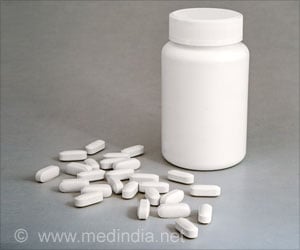Researchers at University College Cork have used bioengineering to produce a new generation of natural antibiotics that target harmful micro-organisms such as MRSA and the food-borne
Researchers at University College Cork have used bioengineering to produce a new generation of natural antibiotics that target harmful micro-organisms such as MRSA and the food-borne pathogen, Listeria monocytogenes.
At the Society for General Microbiology meeting in Harrogate, Dr Field and colleagues explained how by altering different amino acids in nisin, an antimicrobial protein produced naturally by a bacterium called Lactococcus lactis, they had created a family of variants, each slightly different from the naturally occurring protein. These bioengineered nisin variants possessed greater activities than the parent molecule against a range of important clinical pathogens including MRSA, VRE (Vancomycin resistant Enterococci) and the food-borne pathogen Listeria monocytogenes.Nisin is US FDA (United States Food and Drug Administration) approved and is used as a natural biopreservative in heat-treated and low-pH foods. It has a long record of safe use and is one of only a few such compounds to have been applied commercially.
Antibiotic resistance has become a serious public threat and these enhanced nisin variants could become acceptable alternatives to the range of antimicrobials currently available. For instance, nisin is presently included as the active ingredient in a number of commercial products that are used in the treatment of bovine mastitis. From a veterinary perspective, enhanced nisin derivatives with greater specific activities against the bacteria associated with bovine mastitis are a welcome addition to the current antibiotics used to treat this debilitating and economically costly disease.
Using enhanced nisin variants against food-borne pathogens such as Listeria is particularly significant as this bacterium is among the most naturally nisin resistant pathogens. Listeria monocytogenes usually causes illness in vulnerable groups such as pregnant women, babies, the elderly and people with reduced immunity. Among these groups, the illness is often severe and life threatening. The bacterium has been found in a variety of raw foods, such as uncooked meats and vegetables, as well as in processed foods that become contaminated after processing such as soft cheeses and hot dogs.
The economic loss due to recalls of meat and poultry products contaminated with this pathogen is estimated at $1.2–$2.4 billion dollars per year in the United States. In addition, food surveys in the U.S. have estimated the prevalence of L. monocytogenes at 1.6-7.6% in meat, fish, and vegetable products, most of which were RTE (Ready to Eat) foods. In light of this, improved versions of nisin that specifically target Listeria are desirable, and could be a more preferable option than the current form of nisin for some food biopreservation applications.
"For example," said Dr Field, "Nisin has the potential to be a safer alternative due to its high antibacterial activity and nontoxicity to humans. The fact that different nisin derivatives can now be generated to target specific pathogenic organisms makes it even more attractive as a natural and potent antimicrobial for clinical and food use. It may also be possible to reduce the levels of other preservatives such as salt, sugar and certain chemicals often used in high concentrations to inhibit bacterial growth, ultimately leading to not only safe but healthier foods."
Advertisement
SRM















